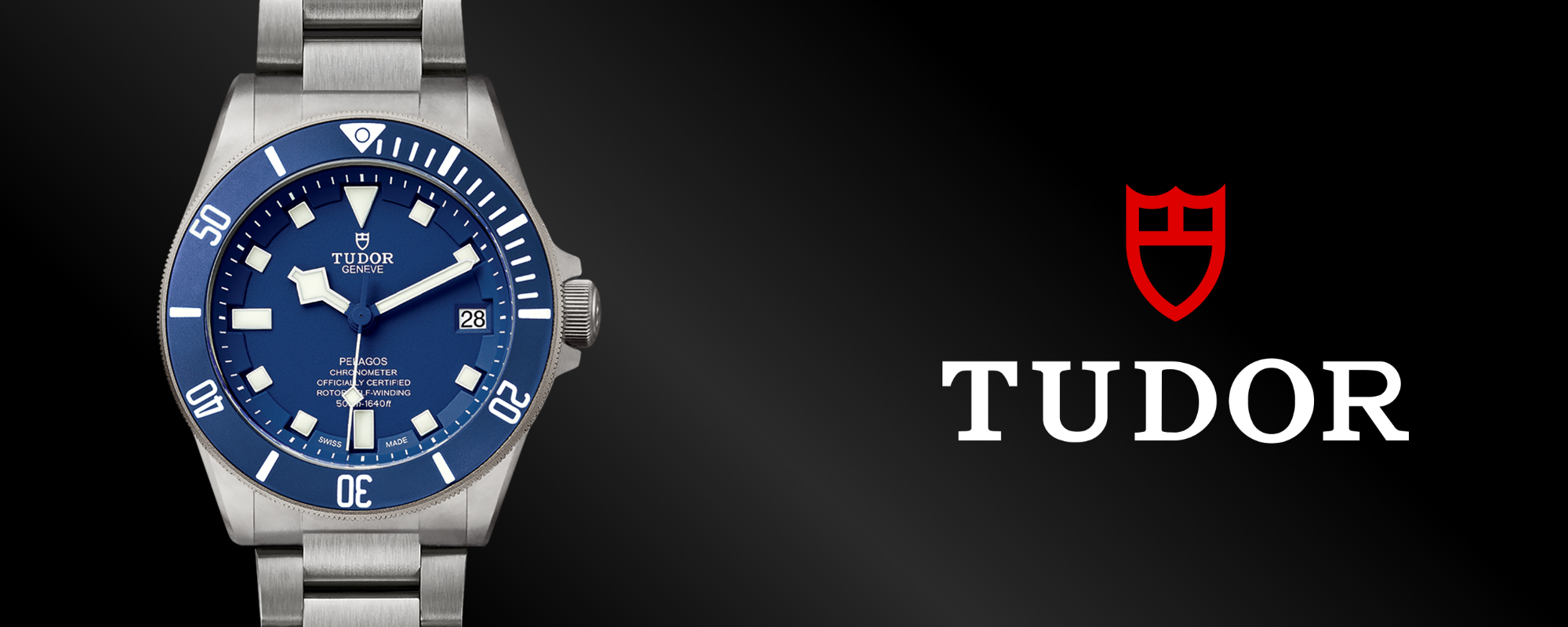
TUDOR WATCHES: FROM 1946 TO TODAY
In the world of watchmaking, some names resonate with particular strength… Tudor is undeniably one of them. Since its creation in 1946, the brand has forged a unique identity, blending performance, elegance, and innovation.
It’s impossible to talk about Tudor without mentioning Hans Wilsdorf, the founder of Rolex. His ambition? To offer watches as robust and precise as those of his prestigious parent company, but at a more accessible price. A bold gamble that gave rise to a brand now essential in the Swiss watchmaking landscape.
But how did Tudor evolve from being seen as Rolex’s "little sister" to becoming an icon in its own right? Which models marked its rise? Let’s take a journey through the history of this brand and discover how it built its legend.
1946: the birth of a visionary idea
Hans Wilsdorf never did things halfway. Already at the helm of Rolex, he sensed that there was room for a brand capable of delivering the same level of technical excellence but within a more accessible price range. His goal was clear: to create reliable, robust, and precise watches, suited for both professionals and everyday adventurers.
Thus, in 1946, Montres TUDOR S.A. was born. This new subsidiary benefited from all the expertise and innovations developed by Rolex while embracing a bolder approach.
From its very first models, Tudor drew heavily from Rolex: waterproof Oyster cases, Swiss automatic movements, and classic designs. But the brand quickly established its own identity, designing watches specifically for professionals and explorers.
The 1950s-1960s: Tudor conquers the world
If one decade was crucial for Tudor, it would undoubtedly be the 1950s. This was when the brand began to assert itself by creating models designed for specific uses.
In 1952, the Tudor Oyster Prince made its debut. This model perfectly embodied the brand’s philosophy: combining elegance, robustness, and reliability. To prove its durability, Tudor subjected the watch to extreme tests, some were worn by explorers on missions in Greenland, while others were tested by professionals in the harshest conditions.
However, the real turning point came in 1954 with the launch of the Tudor Oyster Prince Submariner, the brand’s first dive watch. Designed for professional divers, it quickly caught the attention of the French Navy, which adopted it for its underwater operations.
This partnership with military forces changed everything. Tudor was no longer just offering elegant watches, it was equipping soldiers, explorers, and divers, proving the durability of its creations in real-world conditions.
The 1970s-1980s: the golden age of bold designs
In the 1970s, Tudor embraced more distinctive designs, with watches that featured bold styles and vibrant colors.
This era saw the birth of the Tudor Monte Carlo, a chronograph inspired by motorsport, immediately recognizable by its sophisticated and colorful dial.
But if one model truly defined this period, it was the Tudor Snowflake. Introduced in the late 1960s and refined in the 1970s, it was designed for military divers and stood out with its angular hands, nicknamed "Snowflake hands" by collectors. This aesthetic signature would become inseparable from the brand.
The 1990s-2000s: a transitional period
During this period, Tudor sought to redefine its identity. The brand continued to exist but struggled to stand out from the competition.
It explored different styles and attempted various inspirations without immediately finding the formula that would make a difference. Many models from this era remain less known to the general public, even though their watchmaking quality was impeccable.
But Tudor’s story was far from over.
The 2010s: Tudor’s grand comeback
The 2010s marked a decisive turning point for Tudor watches. After a quieter period, the brand made a powerful comeback by reconnecting with what had made it successful: watches with a strong identity, inspired by its rich heritage but adapted to modern standards.
One of the key moments of this revival was the launch of the Black Bay in 2012. Inspired by the brand’s vintage dive watches, it brought back iconic elements like the "Snowflake" hands while incorporating contemporary technology. The success was immediate. This model quickly became a favorite among watch enthusiasts.
Soon after, Tudor introduced the Pelagos, a watch designed for deep-sea exploration. Its ultra-light titanium case and 500-meter water resistance made it a formidable tool for divers. But the real game-changer was the introduction of in-house movements. By developing its own calibers, Tudor asserted its technical independence, proving that it was no longer just an alternative to Rolex but a brand with a strong identity of its own.
Tudor today: a cult brand
Today, no one sees Tudor merely as an "affordable" alternative to Rolex. The brand has established itself as a major player in luxury watchmaking, with a distinct personality and models that captivate collectors and enthusiasts alike.
Tudor continues to innovate, revisiting its classics with modern materials and exploring new directions, sometimes surprising, through bold collaborations.
Since 1946, Tudor has come a long way. Yet, one thing has never changed: its commitment to producing solid, reliable, and timeless watches, designed to be passed down through generations.
So, among all these legendary watches, which one would you choose to write your own story?

